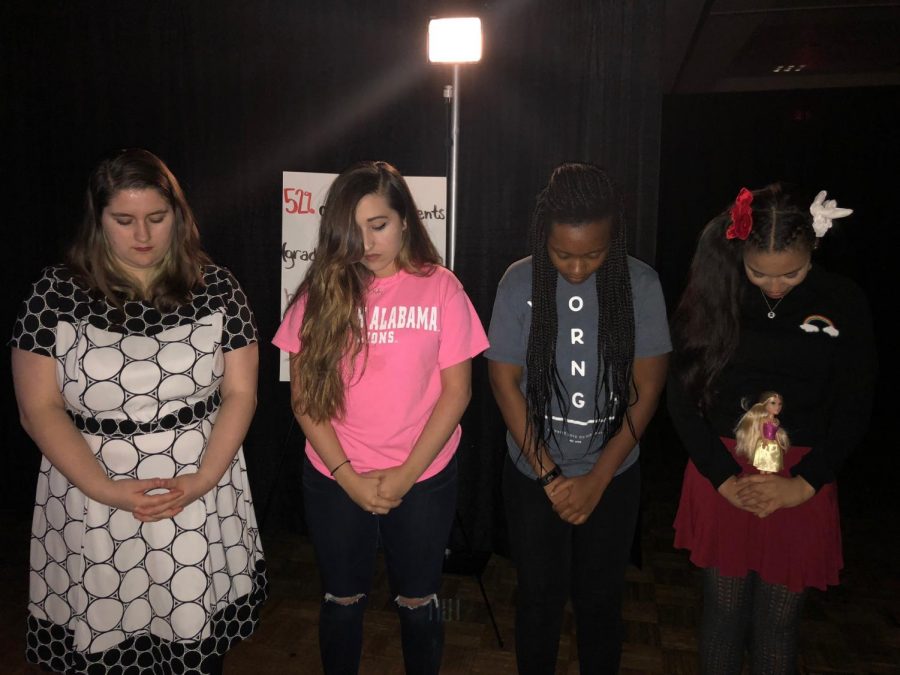Attraction proves effective in oppression education
April 6, 2018
Hearing about oppression throughout history in lectures can be frightening enough. Experiencing them up close is on another level.
As part of Diversity Education Week, the Office of Diversity and Institutional Equity and the Diversity Student Ambassadors hosted their first Tunnel of Oppression in the GUC Banquet Halls April 4 and 5.
The tunnel is an interactive presentation representing different oppressed groups, such as those who have experienced homophobia, sexism, racism and learning challenges.
The attraction draws inspiration from the Museum of Tolerance in Los Angeles and the U.S. Holocaust Memorial Museum in Washington, D.C., which also examine historical oppression.
The tours through the tunnel took approximately 30 minutes, giving visitors enough time to walk through different scenarios of oppression, broken up into four categories: learning disabilities, racism, sexism and homophobia.
Junior Anna Grace Kiddy, who acted in the disabilities section of the attraction, said the tunnel drew many visitors, who all took what they were learning seriously.
“No one made fun of what they were experiencing or seeing because the Tunnel of Oppression was such an eye-opening experience in every category,” she said.
During the learning disabilities portion, visitors wore earplugs and listened to a teacher giving a lecture. The teacher would then ask a question about the video presented. If someone answered incorrectly, the teacher would scold them for missing the question. The attraction also used similar examples for hearing impairment, dyslexia and ADHD.
Visitors then moved on to the racism section. During this presentation, visitors heard stories from someone of Hispanic, Native American and African American heritage. The tales were all real accounts of minorities sharing their story of oppression.
In the sexism section, visitors listened to poems based off situations some young girls and women experience in life. The poems were meant to represent the evolution of women, with the first told from the point-of-view of a young girl who grows up with unrealistic expectations of how to look because of toys like Barbies, through to the last poem, which told how women have to choose between motherhood and working.
The last section of the tunnel visited homophobia, where visitors listened to a monologue about opening up to friends and family concerning sexual orientation and being rejected for it. There were posters giving statistics and phrases students heard on campus about homophobia placed along the room on display.
Once visitors finished the tunnel, a debriefing session was available for each group. In this session, visitors could discuss what they felt and learned during the tour. They then could write what they initially felt on a notecard and give feedback with a 10-question survey.
Overall, the attraction not only raises awareness of oppressed groups, but also shows the struggles and experiences they face daily.
“Each scenario vividly captured their category of oppression,” said senior Kayla Cleveland. “The students and faculty that participated seem to be very passionate and knowledgeable about their scenario of oppression. It was a beautiful experience and needs to be an annual event at UNA.”












